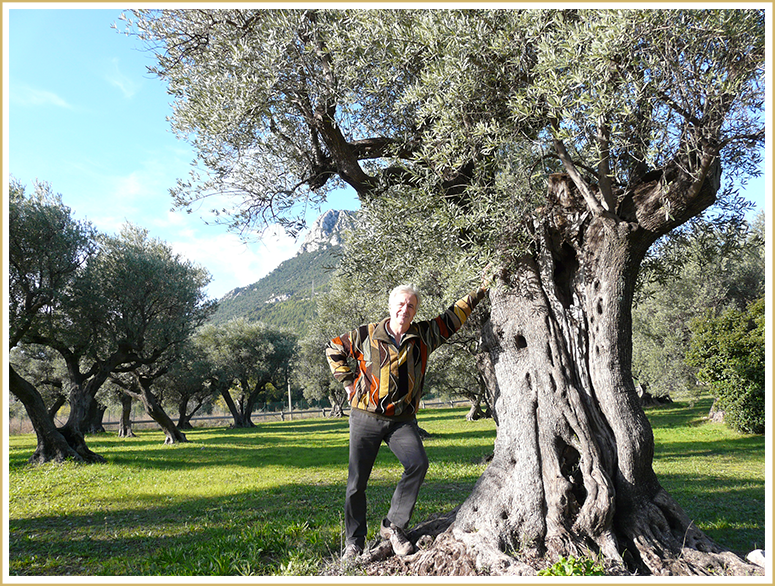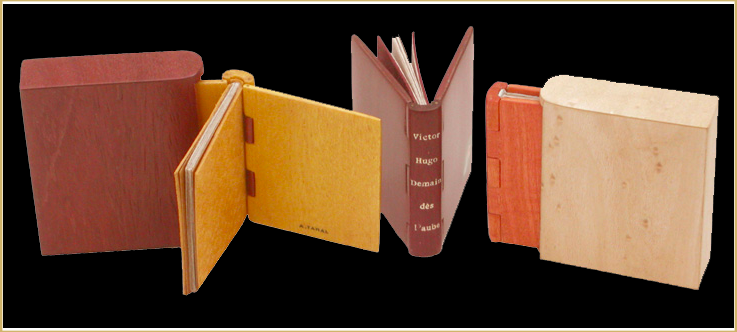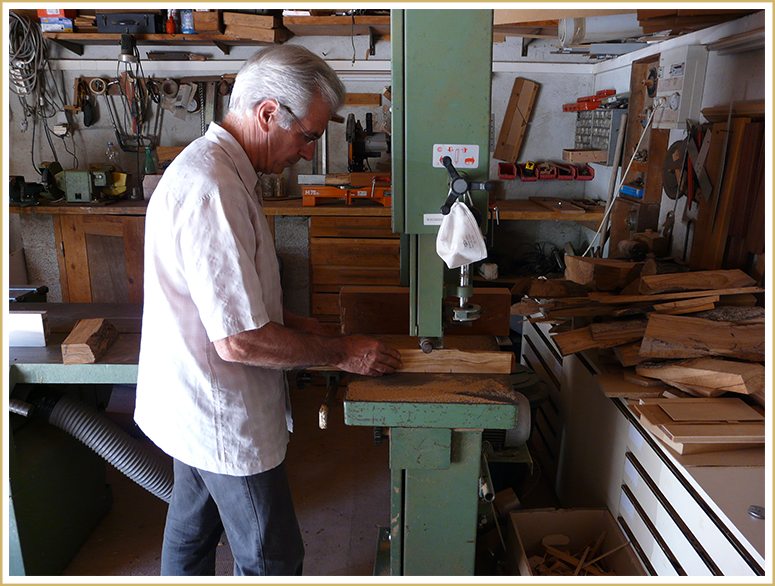
 Whatever the pathway taken, all form of art expresses a passion.
Whatever the pathway taken, all form of art expresses a passion.
.
But we need also to discern how certain of us are able firstly, to manifest this passion and then to rationalise, shape and intensify it, in order to achieve the best results.
.
But in this sequence of developments it is vital to discern and feel this passion: the distinctive quality of the « true » artist is never to be satisfied with his work. A passion is not one where the results can be contemplated dispassionately as mission ac complished !!
.
The outcome of a passion is only final when the artist’s activity comes to an end, by which time, he will have ‘contributed his work unceasingly, in the name of his craft’.
.
It is to this pathway that Alain Taral, so enthusiastically leads us; in the art of book-binding, he knew how to innovate without respite, in a field which entwines originality and difficulty.
Yvan Comolli † (Président des Bibliophiles de France)
 Tulip tree wood, stained blue with mahogonay threading… Small, rosewood boxes decorated with shapes of diamonds and surrounded by a thread of macassar ebony… Linings in rosewood from Rio… Strips of flecked maple stained in ivory… The evocation alone of th e decors created with the precious essences by Alain Taral for his book covers sets an enchanting prelude. Then all the senses needed to appreciate and admire book covers of exceptional quality come into play: the look, the touch, the smell… From various ty pes of leather, be they Marrocain, shagreen or box -calf, which traditionally cover our most beautiful editions, Alain Taral has substituted wood of various types: oak, walnut, acacia/locust, cherry, mahogany and pink peroba wood from Brazil.
Tulip tree wood, stained blue with mahogonay threading… Small, rosewood boxes decorated with shapes of diamonds and surrounded by a thread of macassar ebony… Linings in rosewood from Rio… Strips of flecked maple stained in ivory… The evocation alone of th e decors created with the precious essences by Alain Taral for his book covers sets an enchanting prelude. Then all the senses needed to appreciate and admire book covers of exceptional quality come into play: the look, the touch, the smell… From various ty pes of leather, be they Marrocain, shagreen or box -calf, which traditionally cover our most beautiful editions, Alain Taral has substituted wood of various types: oak, walnut, acacia/locust, cherry, mahogany and pink peroba wood from Brazil.
.
Alain Taral is a specialist of book- binding marquetry. Not only has his vocation matured but more than that, its origins go deep into his childhood in the Vosges and of course, in the forest; as a young boy, he started to carve picture frames and then furniture from wooden logs. One day he was asked to make an inlay to decorate the covers of a book.
The challenge of decorating this book opened up unexplored territory for the creator. Of course wood was already used in book-binding dating from the 15ème and 16ème centuries. Hence, wood made up the basic structure of the book covers; this was however,re-covered with pigskin, a plaque of ivory, enamel or embroidery. Wood was therefore, only a support and not in itself a decorative feature. Alain Taral was the first to use wood itself to decorate book covers in a manner equally as dignified and lavish, as all the materials used to date.
 Furthermore, his experiences have encouraged him to include still more wood in the book covers. Initially, he preserved the traditional body of the work, with the strings and leather back overlapping onto the front and back covers. He then rapidly adopte d the technique named « Bradel » which relies for its effect, amongst others, on the clear separation with grooves, of the backing of the book from the front and back covers; this creates a greater surface for decoration than in previous book binding systems. The design of such a book cover, made completely in wood, left the problem of the joint between the covers and the back of the book. The answer was found, this thanks to a hinge made of a wooden casing , through which an invisible steel rod was inserted. All Alain Taral’s book covers have henceforth been produced using this principle. A precious book cover is always protected by a case, this of course, in the case of Alain Taral, being a veneer of precious wood, either natural or stained.
Furthermore, his experiences have encouraged him to include still more wood in the book covers. Initially, he preserved the traditional body of the work, with the strings and leather back overlapping onto the front and back covers. He then rapidly adopte d the technique named « Bradel » which relies for its effect, amongst others, on the clear separation with grooves, of the backing of the book from the front and back covers; this creates a greater surface for decoration than in previous book binding systems. The design of such a book cover, made completely in wood, left the problem of the joint between the covers and the back of the book. The answer was found, this thanks to a hinge made of a wooden casing , through which an invisible steel rod was inserted. All Alain Taral’s book covers have henceforth been produced using this principle. A precious book cover is always protected by a case, this of course, in the case of Alain Taral, being a veneer of precious wood, either natural or stained.
.
Be his compositions figurative, geometric or of letters, all the decors designed by Alain Taral live on; in devoting himself to the art of book-binding, he has been guided by the spirit of the book – its text,illustrations, structure… The artist also knows how to juggle with the intrinsic qualities of his materials.Wood offers naturally, by virtue of its structure (grain, tones), unlimited decorative wealth and sometimes, the unexpected, which Alain Taral seeks to preserve and enhance, and indeed offers pride of place, particularly to the choice of style « Jansenist ».
.
Alain Taral’s « Feuille à Feuille » studio is situated on a hillside in Provence, a place of tranquillity and reflection-an ideal atmosphere for being creative. He also has at his disposal, the Jean Aicard Museum at Solliès-Ville where his work is exhibited to the public. Private collections together with those in the public domain, have enriched the creative works of Alain Taral, the quality of which are widely recognised by amateur book binders both in France and abroad. (Text extract from catalogue of exhibition in library Fata Libelli).
![]()
 Whatever the pathway taken, all form of art expresses a passion.
Whatever the pathway taken, all form of art expresses a passion.
 Tulip tree wood, stained blue with mahogonay threading… Small, rosewood boxes decorated with shapes of diamonds and surrounded by a thread of macassar ebony… Linings in rosewood from Rio… Strips of flecked maple stained in ivory… The evocation alone of th e decors created with the precious essences by Alain Taral for his book covers sets an enchanting prelude. Then all the senses needed to appreciate and admire book covers of exceptional quality come into play: the look, the touch, the smell… From various ty pes of leather, be they Marrocain, shagreen or box -calf, which traditionally cover our most beautiful editions, Alain Taral has substituted wood of various types: oak, walnut, acacia/locust, cherry, mahogany and pink peroba wood from Brazil.
Tulip tree wood, stained blue with mahogonay threading… Small, rosewood boxes decorated with shapes of diamonds and surrounded by a thread of macassar ebony… Linings in rosewood from Rio… Strips of flecked maple stained in ivory… The evocation alone of th e decors created with the precious essences by Alain Taral for his book covers sets an enchanting prelude. Then all the senses needed to appreciate and admire book covers of exceptional quality come into play: the look, the touch, the smell… From various ty pes of leather, be they Marrocain, shagreen or box -calf, which traditionally cover our most beautiful editions, Alain Taral has substituted wood of various types: oak, walnut, acacia/locust, cherry, mahogany and pink peroba wood from Brazil.
